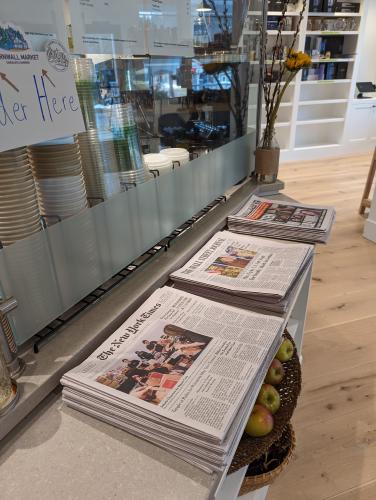| NAME | ID | SIZE | MODIFIED |
| gemma:7b | 430ed3535049 | 5.2 GB | 4 weeks ago |
| llava:latest | 8dd30f6b0cb1 | 4.7 GB | 4 weeks ago |
| mistral:7b | 61e88e884507 | 4.1 GB | 4 weeks ago |
| mistral:latest | 61e88e884507 | 4.1 GB | 3 weeks ago |
| zephyr:latest | bbe38b81adec | 4.1 GB | 4 weeks ago |
And then we can test with curl to make sure that it's running.
1
2
3
4
5
| curl http://localhost:11434/api/generate -d '{
"model": "gemma:7b",
"prompt":"Why is the sky blue?",
"stream": false
}' | jq -r .response | fold -s
|
Sure, here's why the sky appears blue:
The sky appears blue because of a phenomenon called **Rayleigh Scattering**.
Here's the breakdown:
1. **Sunlight:** Sunlight consists of all the colors of the rainbow, with each
color having a different wavelength.
2. **Scattering:** When sunlight enters the Earth's atmosphere, particles like
dust and air molecules scatter the different colors of the spectrum in all
directions.
3. **Scattering Direction:** However, the particles scatter the different
colors differently based on their size and wavelength.
4. **Blue Scatter:** The scattered light, particularly the shorter wavelengths
of blue and violet, scatter more efficiently in the direction of the observer's
eyes.
**Therefore, the scattered light, which primarily consists of blue and violet
colors, is scattered in all directions, and we perceive the sky as blue.**
Here are some additional factors that influence the color of the sky:
* **Time of Day:** The intensity of the blue color is strongest at midday and
decreases as the sun gets closer to the horizon.
* **Clouds and Pollution:** Clouds and pollution can reduce the scattering of
blue light, making the sky appear white or gray.
* **Sunsets and Sunrises:** At sunrise and sunset, the sun's rays have to
travel farther through the atmosphere to reach our eyes, which can cause the
scattered blue light to be scattered more effectively, making the sky appear
orange or red.
It's important to note that this is a simplified explanation and there are some
complex scientific principles involved. However, it gives you a good
understanding of why the sky appears blue.
